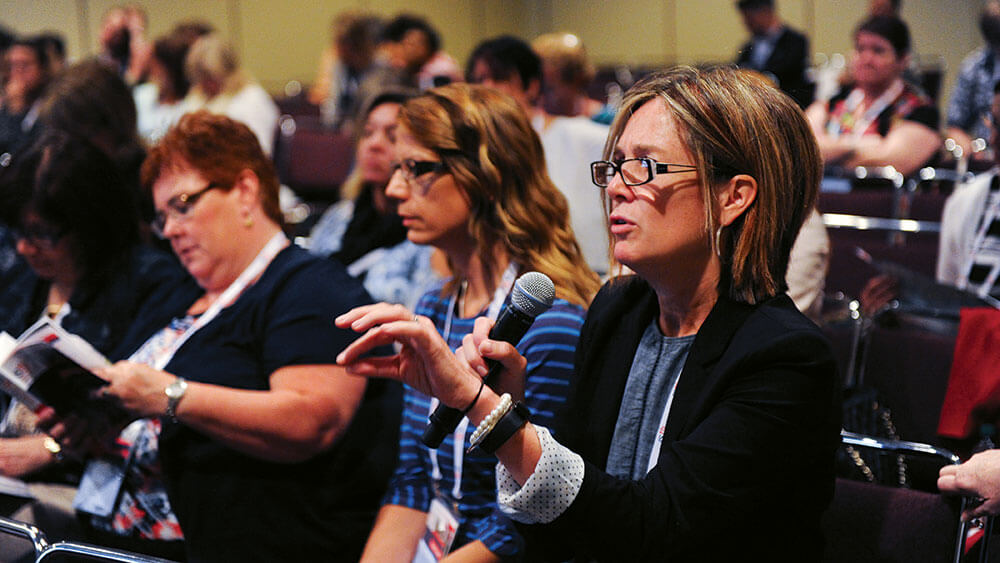
Through a needs assessment and educational surveys, ISTH learned that members and attendees wanted a shorter program, more professional-development sessions, and more opportunities to learn about medical advancements and new technology.
Convene has written a lot about groups that are consolidating their meeting portfolios — the American Society for Microbiology combining two annual conferences into one, the Consumer Bankers Association going from eight down to one — but the International Society on Thrombosis and Haemostasis (ISTH) is going in the other direction. The nearly 50-year-old organization recently announced that it will alter the format and timing of its meetings, moving from an every-other-year Congress to an annual Global Congress, starting in 2020.
ISTH, which focuses on advancing the understanding, prevention, diagnosis, and treatment of blood clots and bleeding disorders, made the decision after serious study, including a formal needs assessment and a strategic meeting management program that began nearly five years ago, according to Lisa Astorga, CMP, ISTH’s director of meetings. “This hasn’t just happened overnight,” Astorga said. “There was thoughtful and careful consideration, and a real plan in mind to take us through this transition.”
REVAMPED FORMAT
Currently, ISTH organizes two separate categories of meetings. The Congress, held every other year, features cutting-edge medical information, keynote speakers, education sessions, and abstracts detailing the latest advancements in the field. The 2015 Congress, held in Toronto, attracted about 7,500 attendees; the 2017 Congress is slated for Berlin.
ISTH also holds an annual meeting of its Scientific and Standardization Committee (SSC), which is made up of 20 subcommittees focusing on blood issues related to everything from pediatrics and genomics to lupus. In years when the Congress takes place, SSC occurs on the days leading up to it, making the program a six-day affair, while on its own SSC is held over four days.
In its revamped format, the Global Congress will include the SSC program within its framework, to allow general conference attendees to benefit from the information shared in those sessions. Other changes are being explored as well, including a shorter program overall, possibly spanning a weekend to better accommodate the busy schedules of medical-practitioner attendees, as well as a greater emphasis on professional development and actionable information and outcomes.
‘TO BE FORWARD THINKING’
While these potential modifications are significant, the decision-making process around them proceeded slowly and intentionally, allowing ISTH to get buy-in and support from members, Astorga said. The decisions were driven by the realization that ISTH’s meetings have evolved a great deal.
For years, SSC attracted about 900 people, but since 2012, those numbers have spiked. SSC 2016 in Montpellier, France, drew more than 2,000 attendees, and added many of the same features as the Congress. Likewise, the Congress has grown exponentially from about 5,000 in 2003 to reach its 7,500-attendee high point.
Both events began to resemble each other, featuring educational components, abstracts, and cutting-edge medication information. “We wanted to make it more consistent,” Astorga said, “and move to a consistent format.”
To determine that new format, ISTH conducted a needs assessment along with educational surveys around the requirements of attendees and members. That’s how ISTH learned that people wanted a shorter program, more professional development, and more opportunities to learn about medical advancements and new technology. “We had to align our session formats to be more open to adult learning outcomes and be more impactful,” Astorga said.
But ISTH didn’t want to rush in. The next Congress will be held in Berlin in July 2017 with the current format, which will continue through the 2019 meeting at the Melbourne Convention + Exhibition Centre. The SSC will hold its final standalone program in Dublin in 2018. The Global Congress format will begin in 2020 in a destination that has not yet been announced.
The Global Congress will continue to take place in convention centers because of its size. Astorga predicts there may be some attrition in attendance going into the newly annual program, but ISTH is hoping to continue to draw more than 6,000 attendees. “This was a good way to do this transition,” Astorga said. “Our leadership looks at things before their backs are against the wall, to be forward thinking. Through careful consideration, it has been a great experience.”
